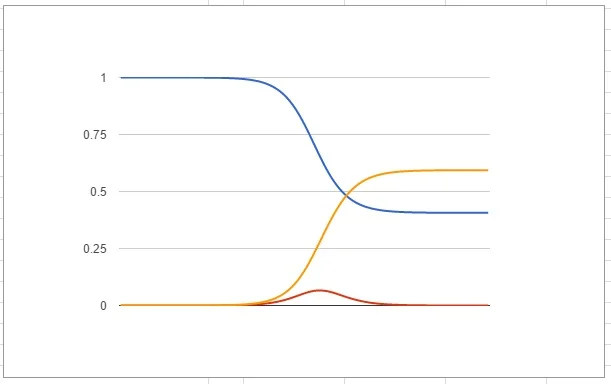Drinking a Pot of Tea
The summer holidays are here and I've begun my usual routine of starting up projects and having a rather indulgent time. Yesterday had me ordering balsa wood for a project which I'll keep secret for now, penning ideas for board games and thinking out a potential treasure trail. All to follow on the website I am sure.
This morning I've been thinking about how best to drink a pot of tea.
Not pictured is μ who was very eager to get involved in the breakfast and is now complaining quietly through the door because I've shut her out of the room for persistent attempts.
I've filled the pot of tea with enough water to make around 6 full mugs, but I'm going to be sipping it throughout the morning by myself. My tolerance to heat is not very good so I am unable to start drinking for quite a while. However, if I leave it too long then the tea gets too cold and thus becomes undrinkable.
By not pouring full mugs I can affect how fast the temperature goes down overall. A large volume of liquid that has been left in the pot (which in this case is pretty much half a sphere) cools down slowly because it has a relatively low surface area to its volume. By pouring out some tea into the mug I am letting some of the water (well tea, but they are almost the same thing for the physics involved) cool at an accelerated rate and so it can get down to the desired goldilocks zone of drinkability, while keeping most of the tea in a high volume to surface area container to retain as much heat as possible while it waits for me.
I started building a differential equation to model this. Cooling mechanics are a common problem in this area and while you can get quite technical about it, usually the temperature is proportional to e^(-kt) where k is a constant and t is time. It produces something called Newton's Cooling Curve. I started building in geometric models to calculate the ratio of surface area to volume as the height goes down in both a sphere (my tea pot) and the frustrum (my mug). God I love the holidays when I can just play.
However, all of this is over blowing it and the solution for optimal drinking can be arrived at by taking it to the extremes. This is often a good tactic for breaking into a maths problem: think about the edge cases. Let's say that I can drink tea between 50°C and 80°C (I have no idea) and that my preference is towards the high end of that range. Then a solution is to pour out a tiny bit of tea and wait for it to cool down to 80°C, which it will reach before the rest of the pot and then down it. Then I can repeat the process: each time the small amount of tea cooling far before the rest of the pot, ensuring that the pot doesn't have much time at all to get down even to the top of my range. I've essentially been shotting my tea.
Large mugs full don't work as well because the time to cool is not negligible compared with the cooling time of the pot and so (for my rate of drinking and acceptable range of temperature at least) the last mug is always too cold. Taking an infinite number of infinitely small mugs is clearly the optimum way to drink tea. (Disclaimer, I am a mathematician rather than a scientist at heart.)
You know that thing where you think so long about how to do something optimally that you end up doing it worse overall? I've been drinking this pot of tea too slowly.








